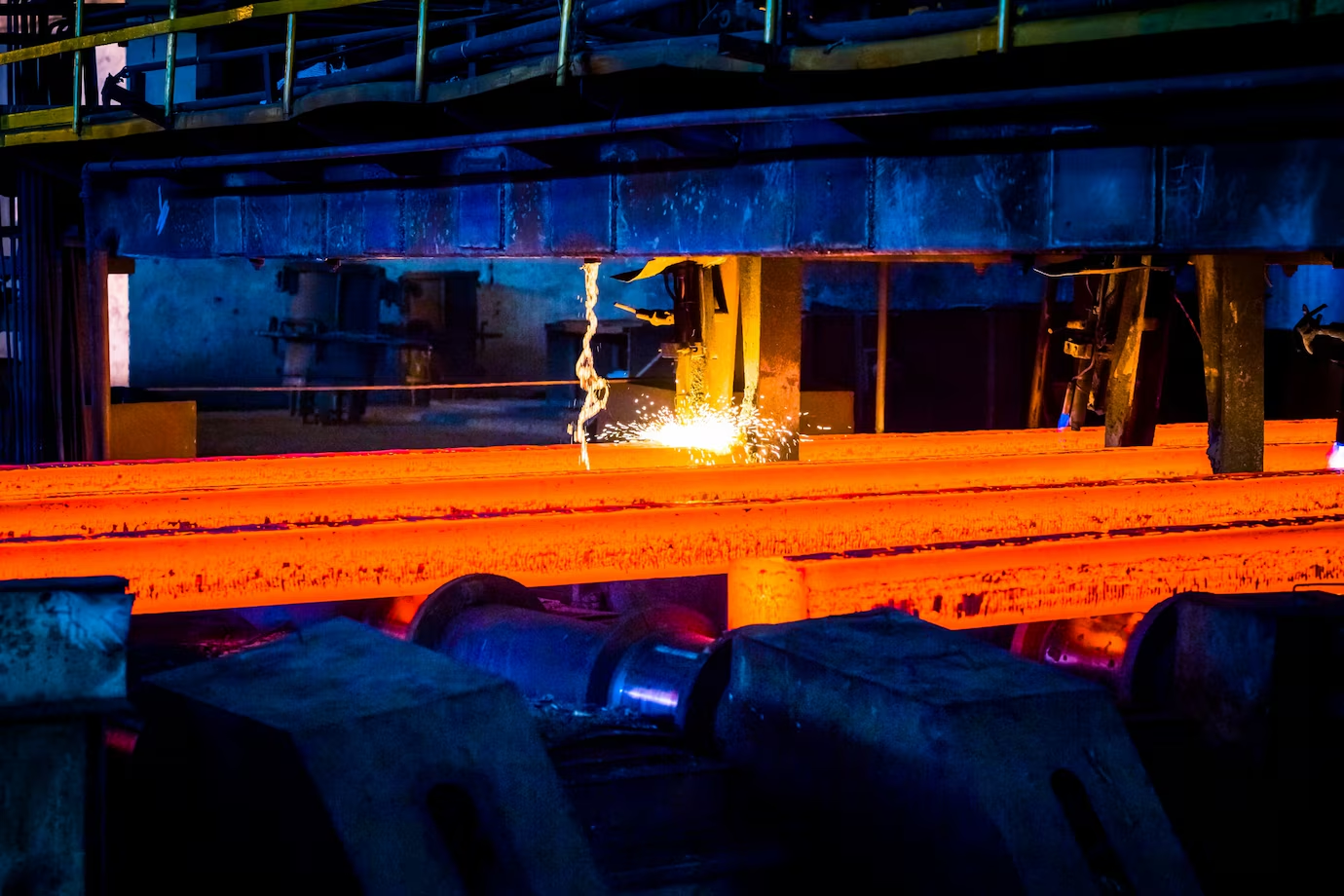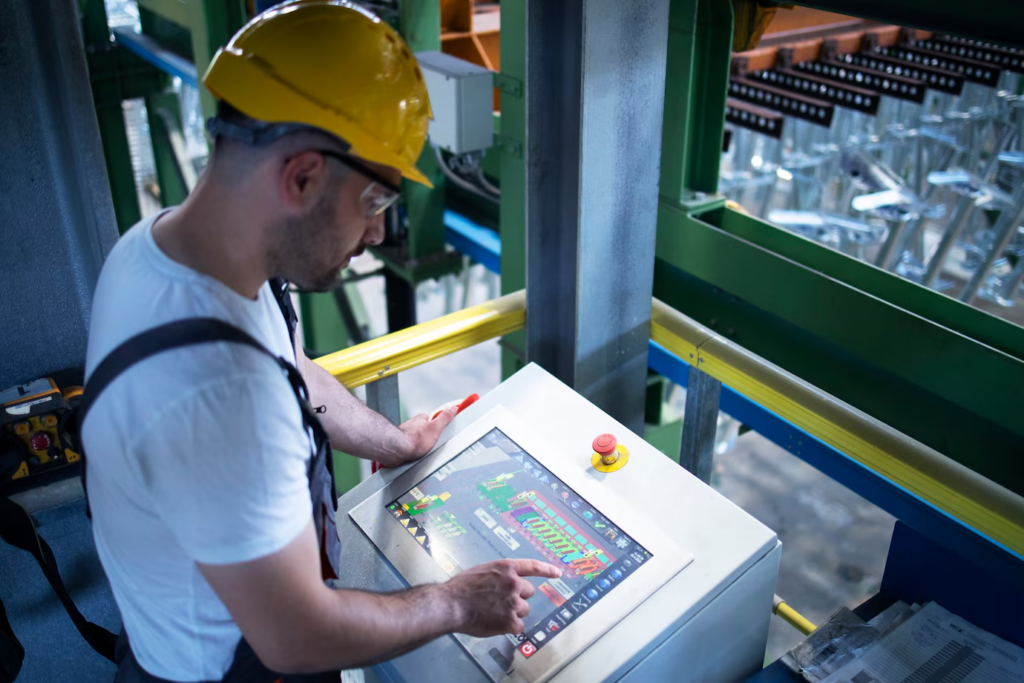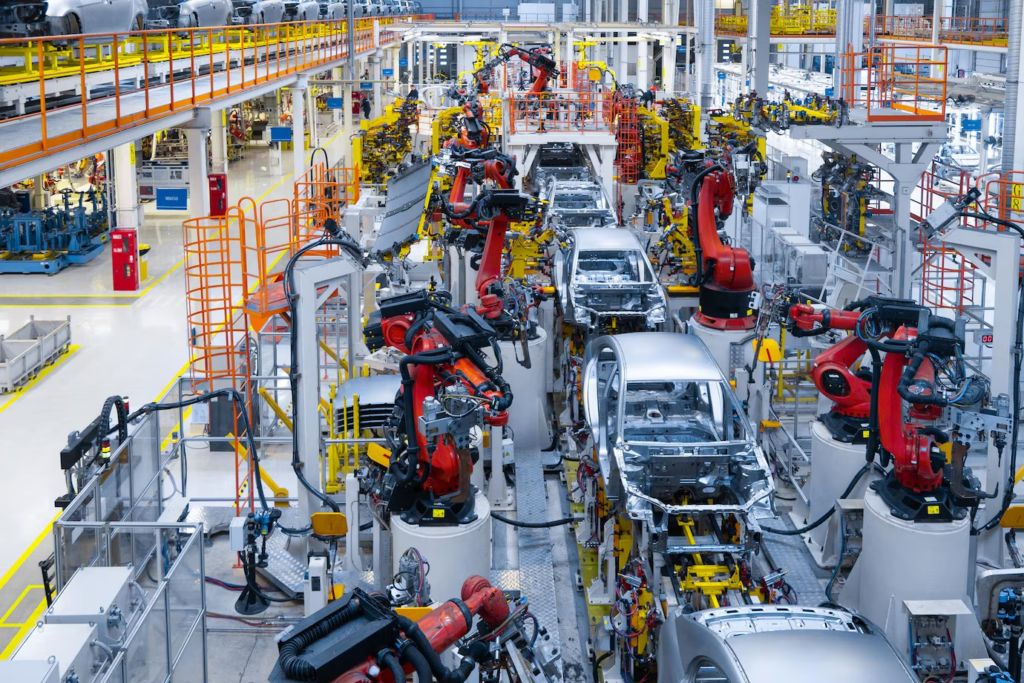Introduction
Manufacturers in high-precision industries constantly struggle with achieving uniform heating, precise temperature control, and energy efficiency in metal forging processes. These challenges lead to inconsistent product quality, increased production costs, and environmental concerns. Induction forging offers a sophisticated solution that addresses these critical pain points while revolutionizing metal forming technology. This comprehensive guide explores what induction forging is, its underlying principles, and why it’s becoming the preferred method for modern metal manufacturing applications.
What is Induction Forging?
Induction forging is an advanced metal forming process that uses electromagnetic induction to heat metal workpieces to their forging temperature before shaping them with dies. Unlike conventional forging methods that rely on external heat sources such as furnaces or open flames, induction forging generates heat directly within the workpiece itself.
This technology relies on high-frequency alternating current passing through an induction coil, which creates a rapidly changing magnetic field. When the metal workpiece is placed within this field, eddy currents are induced in the metal, generating precise, controlled internal heating. The heated metal, now more malleable, is then formed using traditional forging equipment such as presses or hammers.
Induction forging represents a significant advancement in metal forming technology, offering superior control, efficiency, and precision compared to conventional heating methods. It has become an essential process in industries where high-quality, consistent metal components are crucial, including automotive, aerospace, and industrial manufacturing.
The Science Behind Induction Forging
The fundamental principle of induction forging is based on electromagnetic induction, a phenomenon discovered by Michael Faraday in the 19th century. Here’s how the science works:
- Electromagnetic Induction: When alternating current flows through a copper coil (the inductor), it creates a time-varying magnetic field around it.
- Eddy Currents: When a conductive metal is placed within this changing magnetic field, circular electric currents (eddy currents) are induced within the metal according to Faraday’s law of induction.
- Joule Heating: These eddy currents encounter resistance within the metal, which converts the electrical energy into heat energy through a process called Joule heating (I²R losses).
- Skin Effect: High-frequency currents tend to flow near the surface of the conductor, a phenomenon known as the skin effect. The frequency of the alternating current determines the depth of heating, allowing for precise control of the heating pattern.
- Magnetic Hysteresis: In ferromagnetic materials, additional heating occurs due to magnetic hysteresis—the resistance to changes in magnetization—further enhancing the heating effect.
The combination of these physical principles allows induction forging to deliver rapid, efficient, and highly controlled heating directly within the target material, making it ideal for precision forging applications.
How Does Induction Forging Work?
The process of induction forging follows a systematic sequence designed to maximize efficiency, precision, and quality:
- Material Selection and Preparation: The process begins with selecting appropriate metal stock, typically steel, aluminum, copper, or other alloys suitable for forging. The material is cut to the required size and cleaned to remove surface contaminants.
- Coil Design and Setup: Induction coils are specifically designed for the workpiece geometry and desired heating pattern. The coil design is crucial as it determines the heating efficiency and uniformity.
- Induction Heating: The metal workpiece is positioned within the induction coil. When power is applied, the alternating current in the coil creates a magnetic field that induces eddy currents in the metal, rapidly heating it to the desired forging temperature (typically 1100-1250°C for steel).
- Temperature Monitoring: Advanced pyrometers or thermal imaging systems continuously monitor the temperature to ensure it reaches the optimal forging range. This real-time monitoring allows for precise temperature control.
- Transfer to Forging Press: Once heated to the target temperature, the workpiece is quickly transferred to the forging press. Speed is essential to prevent heat loss.
- Forging Operation: The heated metal is shaped using a forging press or hammer. The extreme pressure applied by the dies forms the metal into the desired shape while it’s in its malleable state.
- Controlled Cooling: After forging, the component undergoes controlled cooling to achieve the desired microstructure and mechanical properties. This may involve air cooling, oil quenching, or other cooling methods depending on the material and specifications.
- Post-Forging Operations: The forged component may undergo additional operations such as trimming, machining, heat treatment, or surface finishing to meet final specifications.
This integrated process combines the precision of induction heating with the forming capabilities of traditional forging, resulting in high-quality components with excellent mechanical properties and dimensional accuracy.
Equipment Used in Induction Forging
A complete induction forging system comprises several specialized components working together:
- Power Supply System: This includes:
- High-frequency generators (typically operating at frequencies between 1 kHz and 400 kHz)
- Power control units for precise energy management
- Capacitor banks for power factor correction
- Cooling systems for electronic components
- Induction Coil (Inductor): The heart of the system, custom-designed for specific applications:
- Made from hollow copper tubing to allow for water cooling
- Available in various configurations (helical, pancake, channel, etc.)
- Often feature special coatings to prevent electrical arcing
- Workpiece Handling Equipment:
- Automated feeding systems
- Positioning mechanisms
- Transfer robots for moving heated workpieces to forging presses
- Temperature Monitoring Systems:
- Optical pyrometers
- Infrared cameras
- Temperature sensors and feedback controls
- Forging Press or Hammer:
- Hydraulic presses (50-10,000 tons capacity)
- Mechanical presses
- Screw presses
- Forging hammers for specific applications
- Cooling Systems:
- Water circulation for coil cooling
- Quenching systems for workpieces
- Heat exchangers and cooling towers
- Control Systems:
- Programmable logic controllers (PLCs)
- Human-machine interfaces (HMIs)
- Process monitoring and data acquisition systems
- Quality control instrumentation
At Vividmetrawatt Global, advanced induction forging systems are designed with state-of-the-art components that ensure optimal performance, energy efficiency, and process reliability.
Benefits of Induction Forging
Induction forging offers numerous advantages over conventional forging methods:
- Energy Efficiency:
- Targeted Heating: Heat is generated only where needed, directly in the workpiece.
- Rapid Heating Rates: Heating times are significantly reduced (minutes versus hours in conventional furnaces).
- Reduced Energy Consumption: Energy savings of 30-60% compared to traditional heating methods.
- Enhanced Quality Control:
- Precise Temperature Control: Temperature can be controlled within ±5°C.
- Uniform Heating: Even temperature distribution throughout the workpiece.
- Reduced Oxidation and Decarburization: Less surface degradation due to shorter heating times and controlled atmosphere.
- Improved Productivity:
- Faster Cycle Times: Heating is completed in minutes rather than hours.
- Automation Compatibility: Easily integrated into automated production lines.
- Reduced Scrap Rates: Higher consistency leads to fewer rejected parts.
- Environmental Benefits:
- Lower Carbon Footprint: Reduced energy consumption means lower CO2 emissions.
- Cleaner Workplace: No combustion byproducts or excessive heat radiation.
- Reduced Noise Levels: Quieter operation compared to flame heating.
- Process Flexibility:
- Selective Heating: Ability to heat specific areas of a component.
- Adaptability: Can be adjusted for different materials and part geometries.
- Programmability: Heating profiles can be saved and reproduced precisely.
- Economic Advantages:
- Lower Operating Costs: Despite higher initial investment, the reduced energy consumption and higher productivity lead to lower per-part costs.
- Extended Die Life: Less oxidation and scaling leads to reduced die wear.
- Higher Quality Products: Premium products command better market prices.
The combination of these benefits makes induction forging particularly valuable for high-volume production and high-value components where quality, consistency, and efficiency are paramount.
Applications of Induction Forging
Induction forging has become indispensable across various industries due to its precision and efficiency:
- Automotive Industry:
- Engine Components: Crankshafts, connecting rods, camshafts
- Transmission Parts: Gears, shafts, synchronizer hubs
- Suspension Components: Control arms, knuckles, axle components
- Steering System Parts: Tie rods, pitman arms
- Aerospace Sector:
- Turbine Components: Blades, discs, shafts
- Landing Gear Parts: Struts, torque links, actuator components
- Structural Components: Brackets, fittings, junction elements
- Fastening Systems: High-strength bolts and fasteners
- Industrial Equipment:
- Heavy Machinery Parts: Gears, shafts, couplings
- Mining Equipment: Drill bits, bucket teeth, wear parts
- Construction Machinery: Hydraulic component forgings, structural elements
- Material Handling Equipment: Hooks, chains, lifting components
- Energy Sector:
- Power Generation: Turbine components, generator parts
- Oil & Gas: Valves, flanges, fittings, drilling components
- Nuclear Industry: Specialized high-integrity components
- Renewable Energy: Wind turbine components, hydropower elements
- Railway Industry:
- Wheel Components: Axles, wheel centers
- Suspension Systems: Springs, damping elements
- Coupling Mechanisms: Drawbars, couplers
- Track Components: Rail fastening systems, switch components
- Medical Equipment:
- Surgical Instruments: Forceps, clamps, retractors
- Implant Components: Joint replacement parts, fixation devices
- Medical Device Components: Precision mechanical elements
These applications demonstrate the versatility of induction forging in producing components that require exceptional mechanical properties, dimensional accuracy, and reliability.
Best Practices for Successful Induction Forging
To maximize the benefits of induction forging, industry experts recommend these best practices:
- Material Considerations:
- Material Selection: Choose materials with appropriate electrical and magnetic properties for optimal induction response.
- Material Preparation: Ensure consistent material quality, dimensions, and cleanliness before processing.
- Alloy-Specific Parameters: Adjust frequency, power, and heating times according to specific alloy characteristics.
- Coil Design Optimization:
- Custom Coil Geometry: Design coils specifically for the workpiece shape to ensure uniform heating.
- Coil Maintenance: Regularly inspect and maintain coils to prevent efficiency losses.
- Multi-Zone Heating: Consider multiple coils or coil segments for complex geometries.
- Process Control Excellence:
- Temperature Monitoring: Implement reliable temperature monitoring systems with feedback controls.
- Power Profiling: Develop heating profiles with variable power levels for different stages of heating.
- Documentation: Maintain detailed process parameters for repeatability and quality assurance.
- Integration Strategies:
- Minimize Transfer Time: Reduce the time between heating and forging to maintain optimal temperature.
- Automation Integration: Coordinate heating cycles with forging operations for seamless production flow.
- Digital Integration: Connect induction forging systems to plant-wide monitoring and control systems.
- Quality Assurance Protocols:
- Non-Destructive Testing: Implement appropriate NDT methods for forged components.
- Microstructure Analysis: Periodically verify that the desired microstructure is being achieved.
- Dimensional Verification: Check critical dimensions against specifications regularly.
- Sustainability Measures:
- Energy Recovery: Consider energy recovery systems to capture and reuse waste heat.
- Water Conservation: Implement closed-loop cooling systems to minimize water consumption.
- Predictive Maintenance: Use predictive maintenance to prevent unplanned downtime and energy waste.
By implementing these best practices, manufacturers can achieve optimal results from their induction forging operations, maximizing quality, efficiency, and return on investment.
Future Trends in Induction Forging Technology
The field of induction forging continues to evolve with several emerging trends poised to shape its future:
- Advanced Digital Control Systems:
- AI-Enhanced Process Control: Artificial intelligence algorithms that optimize heating parameters in real-time.
- Digital Twins: Virtual replicas of physical systems for simulation and optimization.
- Predictive Quality Systems: Advanced analytics that predict potential quality issues before they occur.
- Energy Optimization Innovations:
- Next-Generation Power Electronics: More efficient IGBT and SiC-based power supplies.
- Resonant Frequency Tracking: Systems that automatically adjust to optimal frequencies for maximum efficiency.
- Energy Recovery Technologies: Advanced systems to capture and reuse excess heat energy.
- Material Science Developments:
- Tailored Heating Profiles: Customized heating strategies for advanced alloys and composites.
- Microstructure Engineering: Precise control of heating and cooling to achieve specific microstructural properties.
- Multi-Material Processing: Technologies for induction forging of dissimilar materials and hybrid components.
- Integration with Industry 4.0:
- IoT Connectivity: Fully connected induction systems sharing data across the production ecosystem.
- Cloud-Based Process Optimization: Leveraging cloud computing for complex process modeling and optimization.
- Blockchain Traceability: Immutable records of forging parameters for quality assurance and compliance.
- Sustainability Advancements:
- Carbon-Neutral Operations: Induction systems powered by renewable energy sources.
- Closed-Loop Resource Systems: Zero-waste water and cooling systems.
- Lifecycle Assessment Integration: Built-in tools to measure and minimize environmental impact.
- Enhanced Automation:
- Collaborative Robotics: Cobots working alongside humans in forging operations.
- Autonomous Optimization: Self-adjusting systems that continuously improve process parameters.
- End-to-End Automation: Fully automated production lines from raw material to finished components.
These emerging trends highlight the dynamic future of induction forging, pointing toward systems that are more intelligent, efficient, integrated, and environmentally responsible than ever before.
Frequently Asked Questions
How does induction forging work?
Induction forging works by passing high-frequency alternating current through a copper coil, creating a magnetic field that induces eddy currents in the metal workpiece. These currents generate heat directly within the metal through electrical resistance, rapidly bringing it to forging temperature without external heat sources. The heated metal is then shaped using forging presses or hammers.
What are the main advantages of induction forging over conventional methods?
The main advantages include faster heating times (minutes versus hours), higher energy efficiency (80-90% versus 20-60% for conventional methods), precise temperature control (±5°C), minimal oxidation and scale formation, reduced environmental impact, and the ability to selectively heat specific areas of a workpiece.
What types of metals are suitable for induction forging?
Most ferrous metals (iron, steel, and their alloys) are excellent candidates due to their magnetic properties. Non-ferrous metals like copper, aluminum, brass, and titanium can also be processed with induction forging, though they may require different frequency and power settings due to their different electrical and magnetic properties.
What is the process of forging using induction heating?
The process involves material selection and preparation, positioning the metal within a custom-designed induction coil, rapidly heating it to forging temperature through electromagnetic induction, transferring the heated workpiece to a forging press, shaping it under pressure using dies, controlled cooling to achieve desired properties, and finally post-forging operations like trimming and finishing.
Do induction forges use a lot of electricity?
While induction forges consume significant power during operation, they are highly energy-efficient compared to conventional heating methods. The energy is used much more effectively because heat is generated directly within the workpiece, resulting in 30-60% energy savings compared to gas or electric furnaces. This translates to lower overall energy consumption and reduced operating costs.
What are the typical frequencies used in induction forging?
Induction forging typically employs frequencies ranging from 1 kHz to 400 kHz, depending on the application. Lower frequencies (1-10 kHz) are used for larger workpieces and deeper heating, while higher frequencies (10-400 kHz) are preferred for smaller parts and surface heating. The selection depends on workpiece size, material, and desired heating pattern.
How does induction forging affect the microstructure of metals?
The rapid, controlled heating of induction forging minimizes grain growth and preserves favorable microstructures. The process allows precise control of temperature and heating rates, which can be tailored to achieve specific microstructural characteristics. This typically results in finer grain structures and improved mechanical properties compared to conventional heating methods.
What safety considerations are important for induction forging operations?
Key safety considerations include protection from electromagnetic fields, electrical safety protocols, thermal safety measures to prevent burns, proper ventilation systems, hearing protection in forging areas, regular equipment inspection and maintenance, comprehensive operator training, and emergency shutdown procedures.
Can induction forging be used for complex geometries?
Yes, induction forging can effectively handle complex geometries through custom-designed coils that follow the contours of the workpiece. Multi-zone heating with specialized coil configurations can provide uniform heating even for intricate shapes. For extremely complex parts, sequential or selective heating approaches may be employed.
What is the typical return on investment period for switching to induction forging?
While the initial investment for induction forging equipment is higher than conventional systems, the ROI period typically ranges from 1-3 years depending on production volume and operating conditions. The savings come from reduced energy consumption, higher productivity through faster heating cycles, lower material waste due to reduced oxidation, decreased labor costs, and higher product quality with fewer rejections.
By embracing induction forging technology, manufacturers can achieve significant improvements in productivity, quality, and sustainability. This advanced metal forming process continues to evolve, offering innovative solutions to the challenges of modern manufacturing while delivering superior components for the most demanding applications.
To learn more about how induction forging can transform your manufacturing processes, contact the experts at Vividmetrawatt Global today.





